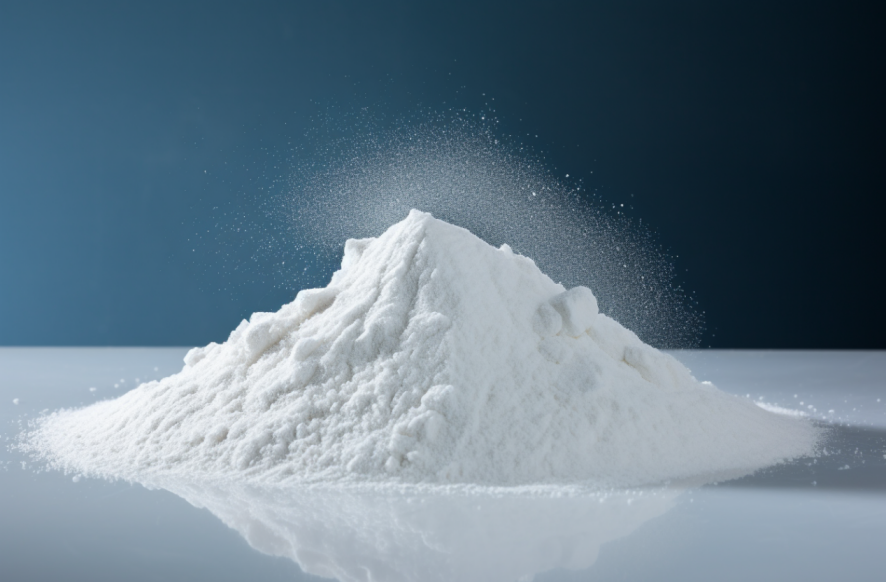Cost-Effective Solutions: Value Proposition of Calcium Stearate in Plastic Production
12/02/2024
Calcium stearate, a versatile additive, plays a crucial role in plastic manufacturing, enhancing the properties and performance of various plastic products. Understanding its composition, properties, and applications is paramount for manufacturers seeking to optimize their production processes. In this blog, we delve into the depths of calcium stearate’s role in plastic manufacturing, exploring its significance and applications.
Understanding Calcium Stearate:
1.1 Definition and Chemical Composition:
Calcium stearate is a calcium salt derived from stearic acid, a saturated fatty acid. It typically exists as a white, odorless powder with the chemical formula Ca(C17H35COO)2. This compound is insoluble in water but soluble in organic solvents like hot alcohol.
1.2 Physical and Chemical Properties:
Calcium stearate exhibits excellent lubricating properties, making it an ideal additive for plastic manufacturing. It possesses a high melting point, around 155°C, contributing to its ability to improve the thermal stability of plastic formulations. Additionally, calcium stearate acts as an effective stabilizer and dispersant in various polymer systems.
1.3 Manufacturing Process:
The production of calcium stearate involves the reaction between stearic acid and calcium hydroxide or calcium oxide. This reaction typically occurs in a controlled environment, resulting in the formation of calcium stearate precipitates. The precipitates are then filtered, washed, and dried to obtain the final product in the form of a fine powder.
Role of Calcium Stearate in Plastic Manufacturing:
2.1 Plasticization and Lubrication:
Calcium stearate acts as a plasticizer and lubricant in plastic manufacturing processes. It reduces friction between polymer chains, thereby enhancing flow characteristics during processing. This property is particularly beneficial in extrusion and injection molding, where smooth flow is essential for achieving uniform product quality.
2.2 Thermal Stability:
One of the significant contributions of calcium stearate is its ability to improve the thermal stability of plastic formulations. By effectively dispersing heat and preventing thermal degradation, calcium stearate helps maintain the integrity of plastic materials during processing and application, ultimately extending their lifespan.
2.3 Antioxidant Properties:
Calcium stearate also exhibits antioxidant properties, protecting plastic materials from oxidative degradation caused by exposure to air, heat, and light. By scavenging free radicals and inhibiting chain reactions, calcium stearate helps preserve the mechanical and aesthetic properties of plastic products over time.

Applications of Calcium Stearate in Plastic Manufacturing:
3.1 PVC (Polyvinyl Chloride) Production:
In PVC manufacturing, calcium stearate serves multiple purposes. It acts as a lubricant, facilitating the dispersion of PVC resin and other additives, thus improving the processability of the material. Additionally, calcium stearate functions as a stabilizer, preventing thermal degradation and maintaining the integrity of PVC products.
3.2 Other Plastic Materials:
Beyond PVC, calcium stearate finds applications in the production of various plastic materials, including polyethylene, polypropylene, and polystyrene. It is used as a processing aid, mold release agent, and anti-blocking agent, contributing to improved product quality and manufacturing efficiency.
3.3 Supplier Spotlight: CHEMBROAD
As a leading supplier of calcium stearate for plastic manufacturing, CHEMBROAD is committed to delivering high-quality additives that meet the stringent requirements of the industry. With a focus on innovation and customer satisfaction, CHEMBROAD offers a diverse range of calcium stearate products tailored to the specific needs of each application.
Advantages of Calcium Stearate:
4.1 Improved Processability:
The addition of calcium stearate significantly enhances the processability of plastic materials. By acting as a lubricant and reducing friction between polymer chains, calcium stearate facilitates smoother flow during processing. This results in higher production efficiency, as it reduces the energy consumption and wear on machinery, leading to smoother extrusions and more uniform injection moldings.
4.2 Enhanced Mechanical Properties:
Calcium stearate plays a pivotal role in improving the mechanical properties of plastics. It acts as a reinforcing agent, increasing the strength and durability of plastic products. Through proper dispersion within the polymer matrix, calcium stearate helps to reinforce the structural integrity of plastic materials, resulting in enhanced resistance to deformation, impact, and fatigue.
4.3 Cost-Effectiveness:
One of the significant advantages of calcium stearate is its cost-effectiveness in plastic manufacturing. By optimizing production processes and reducing material wastage, calcium stearate helps manufacturers achieve cost savings without compromising on quality. Its ability to improve processability and mechanical properties also contributes to the overall efficiency of plastic production, further enhancing cost-effectiveness.
Considerations for Optimal Usage:
5.1 Dosage and Formulation:
Determining the appropriate dosage of calcium stearate is crucial for achieving the desired performance in plastic formulations. Factors such as the type of plastic, processing conditions, and end-use requirements should be considered when formulating with calcium stearate. Manufacturers can optimize dosage levels through empirical testing and analysis to achieve the desired balance between processability, mechanical properties, and cost-effectiveness.
5.2 Compatibility with Other Additives:
When incorporating calcium stearate alongside other additives, compatibility considerations are essential to ensure optimal performance. Certain additives may interact with calcium stearate, affecting its efficacy or causing undesirable effects on the final product. Compatibility testing should be conducted to assess the interactions between calcium stearate and other additives, enabling manufacturers to formulate with confidence and consistency.
5.3 Quality Control Measures:
Maintaining consistency and reliability in plastic manufacturing processes involving calcium stearate requires robust quality control measures. From raw material selection to production processes and final product testing, quality control protocols should be implemented at every stage to ensure adherence to specifications and standards. Regular monitoring and testing help identify and address any deviations or inconsistencies, ensuring the consistent performance of calcium stearate-enhanced plastic materials.
5.4 Supplier Spotlight: CHEMBROAD
As a trusted supplier of calcium stearate for plastic manufacturing, CHEMBROAD is committed to delivering high-quality additives that meet the evolving needs of the industry. With a focus on innovation, reliability, and customer satisfaction, CHEMBROAD offers a comprehensive range of calcium stearate products tailored to the specific requirements of each application. Through continuous research and development, CHEMBROAD remains at the forefront of providing cost-effective solutions that enhance the performance and efficiency of plastic manufacturing processes.
Conclusion:
Calcium stearate plays a pivotal role in plastic manufacturing, offering numerous benefits such as plasticization, lubrication, thermal stability, and antioxidant protection. Its versatility and effectiveness make it an indispensable additive in various plastic formulations, contributing to enhanced product performance and production efficiency. As manufacturers continue to seek innovative solutions, suppliers like CHEMBROAD play a crucial role in providing high-quality calcium stearate for the evolving needs of the industry.




